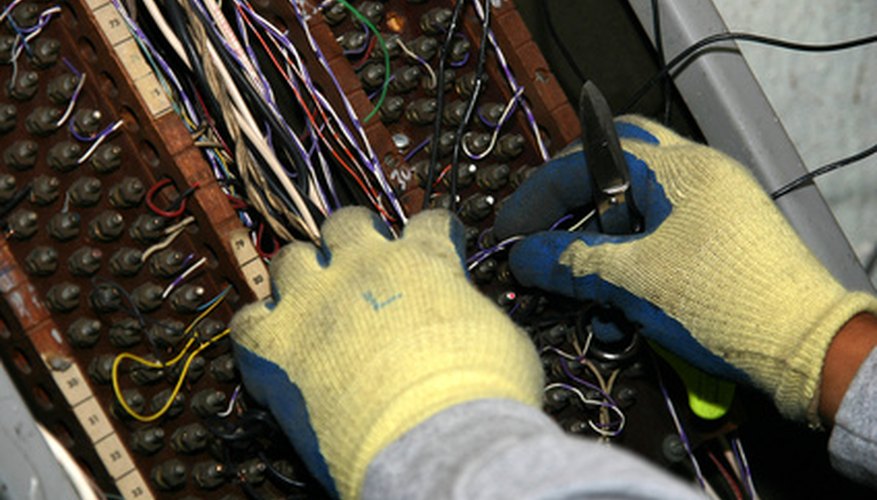Seeing how much electricity is running through a wire can be a problem. To use an ammeter you must insert the meter into the circuit, which means disconnecting and then reconnecting a wire. To use a voltmeter you must measure the voltage drop across a load--you can't look at voltage in a wire. The volt stick solves this problem, but it only works for AC. Placing the end of a voltage stick on a wire can unobtrusively tell you the amount of current flowing through the wire.
History
In 1820, Hans Christian Oersted discovered that when electricity flows through a wire a magnetic field is created around the wire. This relationship is fundamental to much of modern electronic technology, including volt sticks.
Types
Electricity comes in two basic types: Alternating Current (AC) and Direct Current (DC). Generators produce AC and batteries produce DC.
Significance
Electricity is the flow of electrons. With DC the electrons all flow in one direction, and the magnet field created around the wire is static. With AC the flow of electrons reverses direction periodically, and the magnetic field created around the wire rises and falls periodically.
Function
The volt stick tests for the presence of AC. The most common form of the volt stick is a pen-shaped device that can be carried like a pen in a shirt pocket or clipped to a utility belt. When the tip of the "pen" touches a wire or junction that is carrying AC, some part of the device lights up. Some models also include a buzzer.
- The volt stick tests for the presence of AC.
- When the tip of the "pen" touches a wire or junction that is carrying AC, some part of the device lights up.
Benefits
AC can be detected unobtrusively, without cutting any wires or removing the wire's insulation. AC can also be detected in places where it probably should not be, such as pipes and metal frames. These features greatly facilitate the search for both broken circuits and improper grounds.
Warning
OSHA has identified some volt sticks that are unsafe to use. These are foreign-made devices that are improperly insulated. Always buy American and always look for the OSHA or UL seal of approval.
Expert Insight
There is a volt stick that works with DC, but it is a somewhat more complex device. The DC volt stick consists of two parts: a transmitter and a pen-like device similar to the AC volt stick pen. For live circuits the transmitter is attached to the power supply and imposes a signal on the power source. It is this signal that the DC pen picks up. Some of these systems come with a power supply that allows you to test a circuit that is not powered.
- There is a volt stick that works with DC, but it is a somewhat more complex device.
- For live circuits the transmitter is attached to the power supply and imposes a signal on the power source.
